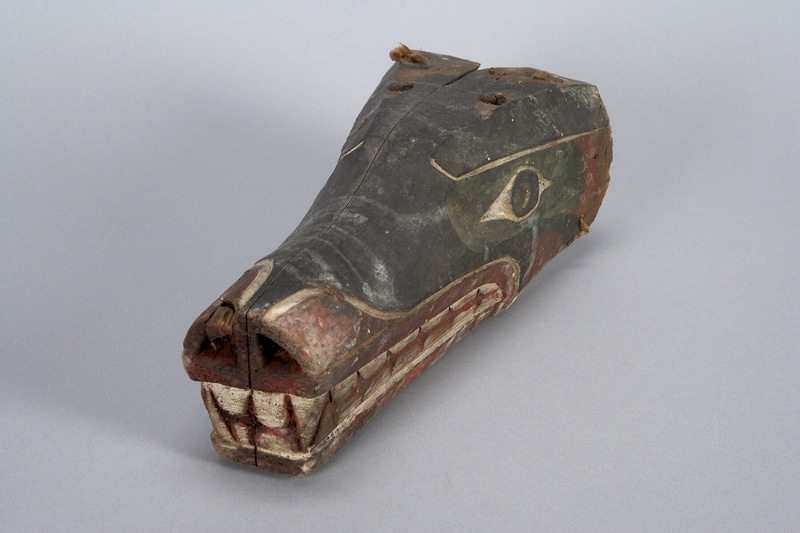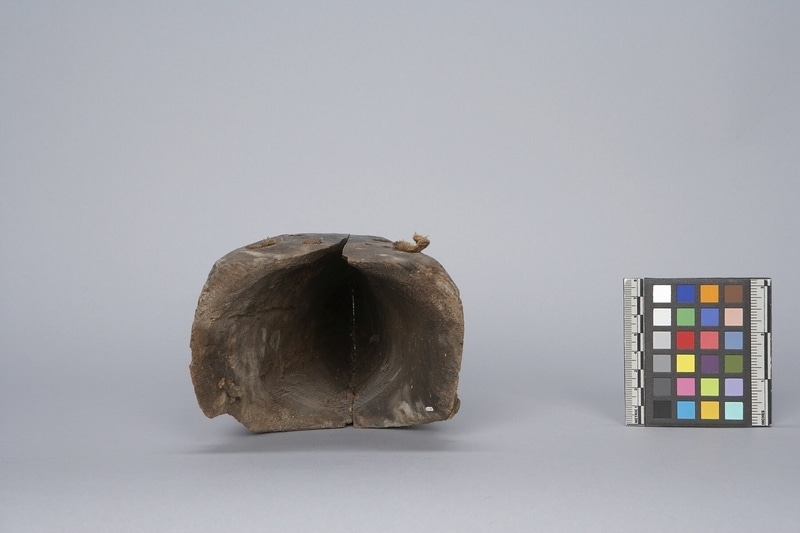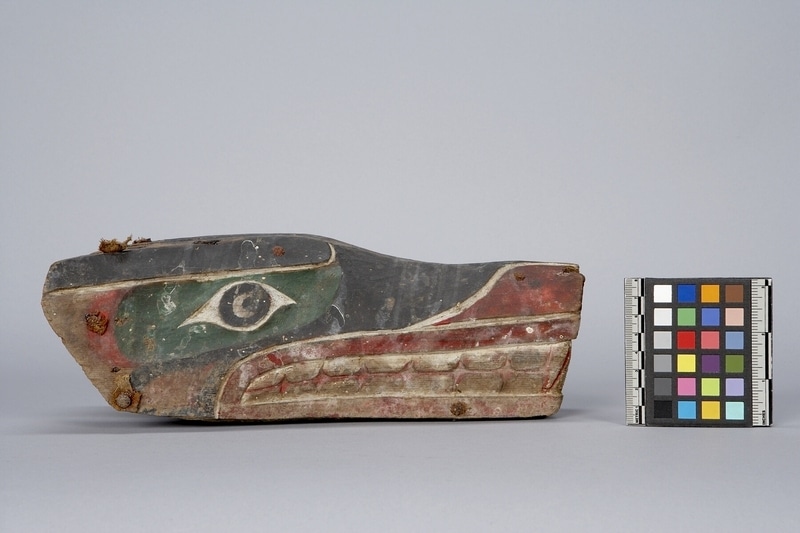Headdress Item Number: Nb3.1344 from the MOA: University of British Columbia



Description
Wooden wolf headdress, or mask, in two cedar pieces joined lengthwise by nails. Hollowed out. Skull area slopes slightly to form muzzle, ending in red nose with hollowed out nostrils angled slightly upward and outward. In relief, long, straight, thick, black brows over recessed green ovoids surrounding white and black eyes. Mouth, length of muzzle to directly under eye socket, is all teeth, marked off by red grooves and red lips. Rest of mask in black and some red. Cloth bits attached to nail heads circling skull. Top of head left with roughened holes where ears once were. Whitened marks cover paint which is faded in some areas. Short length of cord is knotted on interior through two pierced holes.
History Of Use
Masks of this type worn on forehead in the Walasaxa'akw ritual, a group dance in which wolf masks and blankets were worn. Wolf appeared as ancestral myth figure. Similar dance is dlugwala, 'having supernatural power'. From back hung either a cloth or fur drape, sometimes an entire wolf skin or cedar bark. Mask attached to head by either framework helmet made of twigs, or, for long muzzles, a stick brace at back that anchored across chest or waist. This wolf mask was worn by a woman.
Cultural Context
ceremonial.
Iconographic Meaning
Muzzle with angled nose, prominent, pointed incisors as part of bared teeth, and ears, now missing identify animal as a wolf, the expert hunter. Always expressions of intensity in masks. Xisiwe' means 'teeth on the forehead'.
Myths tell of the Village of the Warrior Wolves.
Narrative
Wastell said he collected the belongings in this donation in Telegraph Cove in the 1920s.
Item History
- Made in British Columbia, Canada before 1930
- Collected in Telegraph Cove, British Columbia, Canada during 1925
- Owned by Fred Wastell before February 7, 1983
- Received from Fred Wastell (Donor) on February 7, 1983
What
Who
- Culture
- Kwakwaka'wakw
- Previous Owner
- Fred Wastell
- Received from
- Fred Wastell (Donor)
Where
- Holding Institution
- MOA: University of British Columbia
- Made in
- British Columbia, Canada
- Collected in
- Telegraph Cove, British Columbia, Canada
When
- Creation Date
- before 1930
- Collection Date
- during 1925
- Ownership Date
- before February 7, 1983
- Acquisition Date
- on February 7, 1983
Other
- Condition
- fair
- Current Location
- Case 24
- Accession Number
- 0851/0002